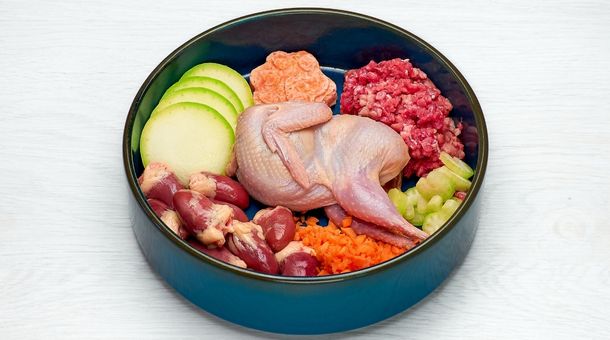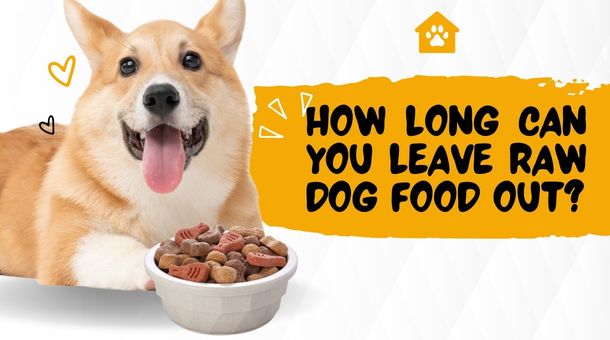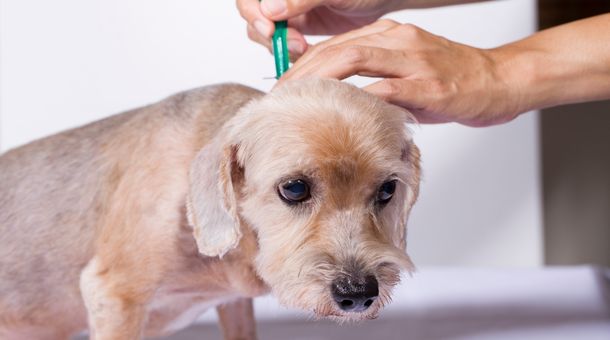Raw food diets for dogs, also known as the BARF (Biologically Appropriate Raw Food) diet, have become increasingly popular among pet owners who want to provide their dogs with a more natural, species-appropriate diet.
Here’s everything you need to know about feeding your dog a raw food diet:
What is a raw food diet for dogs?
A raw food diet for dogs is a diet that consists of uncooked, unprocessed, and often organic or pasture-raised meats, bones, and vegetables. This diet is designed to mimic what dogs ate in the wild before the advent of commercial pet foods.
What are the benefits of a raw food diet for dogs?

Here are some of the claimed benefits of a raw food diet for dogs:
- Improved coat and skin health
- Better digestion
- Increased energy levels
- Improved dental health
- Stronger immune system
- Reduced risk of certain diseases
- Reduced allergies and food sensitivities
- Improved behavior
- Longer lifespan.
What are the risks of a raw food diet for dogs?
Here are some of the potential risks associated with feeding dogs a raw food diet:
- Risk of bacterial infection Risk of bone fractures and blockages
- Potential nutrient deficiencies
- Increased cost and preparation time
- Risk of pancreatitis
- Risk of transmission of parasites and infectious diseases.
- Risk of nutritional imbalances
- Risk of dental damage
- Risk of contamination
- Difficulty sourcing high-quality ingredient
Not all of these risks apply to every dog on a raw food diet, and some can be mitigated by proper handling, preparation, and supervision. However, it’s always best to consult a vet before changing your dog’s diet.
How to travel with raw dog food?

Traveling with raw dog food can be challenging, but there are a few tips that can help make it easier:
Freeze the food
Freeze the raw food before traveling to help keep it fresh and prevent it from spoiling during transit. You can use a portable cooler or insulated bag with ice packs to keep the food frozen while on the go.
Portion the food
Portion the raw food into individual servings before freezing. This will make thaw and feeding your dog easier while traveling and help prevent food waste.
Bring necessary supplies
Pack any necessary supplies, such as a bowl, utensils, and cleaning supplies, to make feeding your dog on the go easier and cleaner.
Research your destination
To ensure you can find appropriate food options for your dog, such as a pet store or raw food supplier. Check regulations for bringing raw food into your destination country or state. Some places may restrict bringing in raw food due to concerns about disease transmission.
Consider pre-made raw food
If traveling with raw food is too challenging, consider using pre-made raw food that can be easily transported, such as freeze-dried or dehydrated raw food. These products can be rehydrated with water and served to your dog while on the go.
How do you prepare a raw food diet for dogs?
A raw food diet for dogs typically consists of meat, bones, and vegetables. The meat should be How do you prepare a raw food diet for dogs?
Preparing a raw food diet for dogs involves several steps to ensure the food is nutritionally balanced and safe.
Here is a general overview of how to prepare a raw food diet for dogs:
- Consult with a veterinarian
- Choose high-quality ingredients
- Balance the diet
- Prepare the food
- Store and serve the food safely
- Include a variety of proteins
- Add fruits and vegetables
- Avoid certain ingredients
- Consider supplements
- Monitor your dog’s health
how long can raw dog food stay in the fridge?
Raw dog food can typically be stored in the refrigerator for up to three to five days, depending on the type of meat and the specific recipe. It’s important to follow safe food handling practices when storing raw dog food in the refrigerator to minimize the risk of bacterial contamination.
Here are some tips for storing raw dog food in the refrigerator:
- Store the food in a sealed container: Raw dog food should be stored in an airtight container to prevent bacterial growth and maintain freshness.
- Keep the temperature consistent: The temperature in the refrigerator should be kept at or below 40°F (4°C) to slow bacterial growth.
- Use it within the recommended time frame: Raw dog food should be used within three to five days of being stored in the refrigerator to ensure freshness and safety.
- Don’t mix old and new food: When storing raw dog food in the refrigerator, it’s important to use a “first in, first out” approach. This means that newer food should be stored behind older food and that any food in the refrigerator for more than five days should be discarded.
How much should you feed your dog on a raw food diet?
The amount of food you should feed your dog on a raw diet will depend on your dog’s size, age, and activity level. Generally, you should feed your dog 2-3% of its body weight daily. For example, if your dog weighs 50 pounds, you should feed them 1-1.5 pounds of food daily.
How should you transition your dog to a raw food diet?
If transitioning your dog to a raw food diet, you should do it gradually over a week or two. Start by adding a small amount of raw food to your dog’s regular food and gradually increase the amount of raw food while decreasing the amount of regular food.
Should you consult your vet before starting your dog on a raw food diet?
Yes, it’s important to consult with your vet before starting your dog on a raw food diet. Your vet can help you determine if a raw food diet is appropriate for your dog, and they can also help you create a balanced and nutritious meal plan. Additionally, your vet can monitor your dog’s health and make recommendations as needed.
How much does raw dog food cost
The cost of raw dog food can vary depending on various factors, such as the quality of ingredients, the brand, the type of meat, and the location. Generally, raw dog food can cost anywhere from $2 to $10 per pound or more, with the average cost of around $5 to $6 per pound.
It’s important to note that feeding your dog a raw diet can be more expensive than feeding a traditional kibble-based diet. However, some pet owners believe the health benefits of feeding raw food to their dogs outweigh the added expense. It’s also possible to save money by buying in bulk or making your raw food at home, although this requires careful research and knowledge of a dog’s nutritional needs.
How long can you leave raw dog food out?
- Raw dog food should not be left at room temperature for over 2 hours.
- Bacteria can quickly multiply in raw meat and cause foodborne illness in dogs and humans.
- It should be discarded if your dog doesn’t finish their raw food meal within 2 hours.
- It’s important to handle raw dog food carefully and to follow safe food handling practices to minimize the risk of bacterial contamination.
- Raw food should be stored in the refrigerator or freezer until it is ready to be served and thawed properly before serving.
- Any bowls or utensils used to handle raw dog food should be washed with soap and hot water after use to prevent the spread of bacteria.
Conclusion
In conclusion, feeding your dog a raw food diet can provide numerous benefits, including improved digestion, healthier skin and coat, and increased energy levels. However, it’s important to research and consults a veterinarian or veterinary nutritionist before starting your dog on a raw diet.




